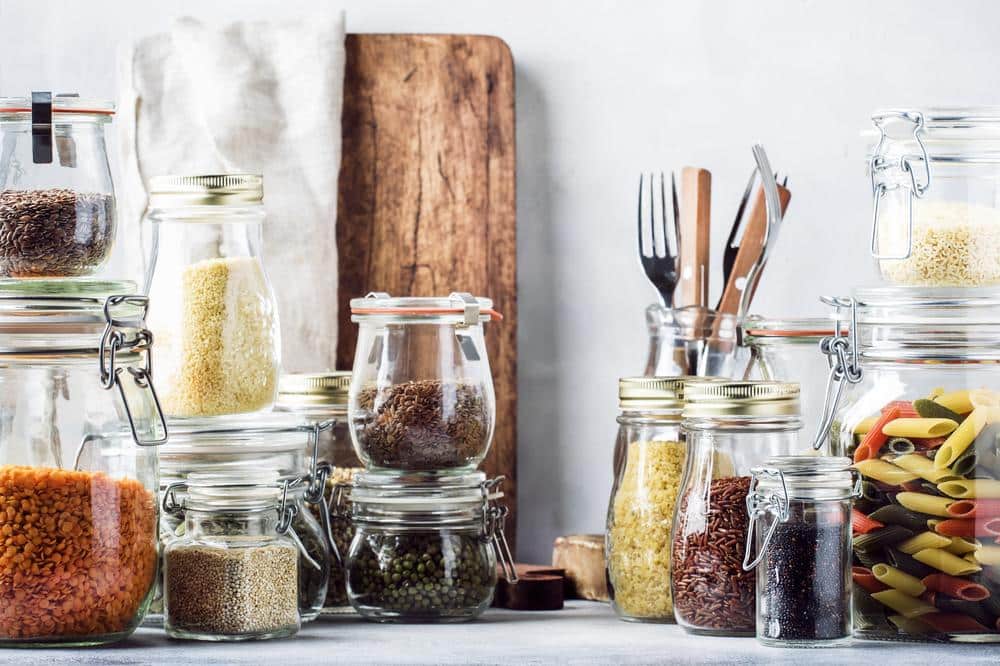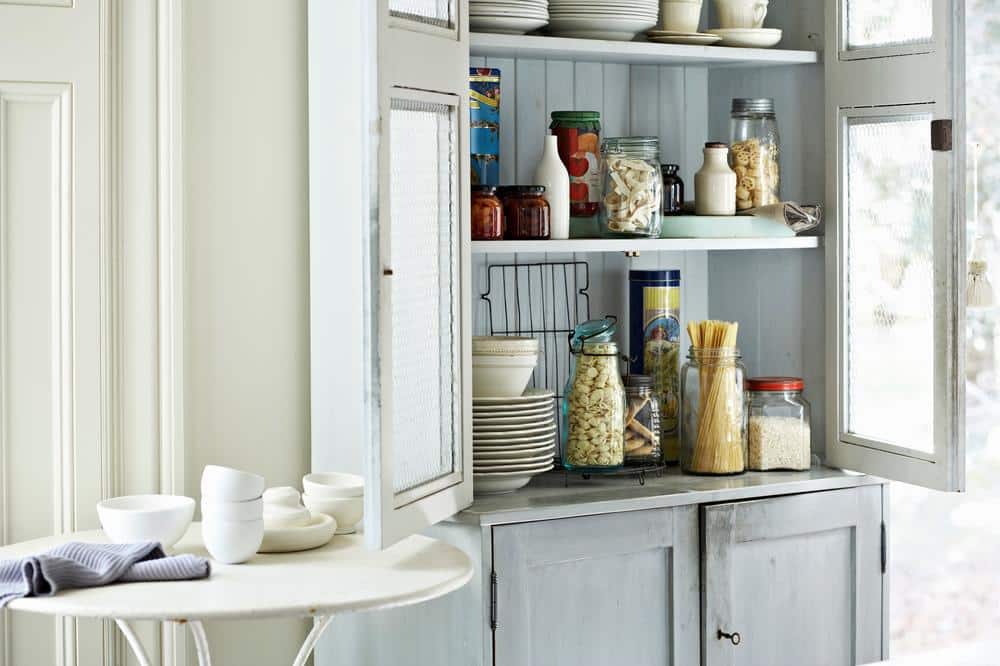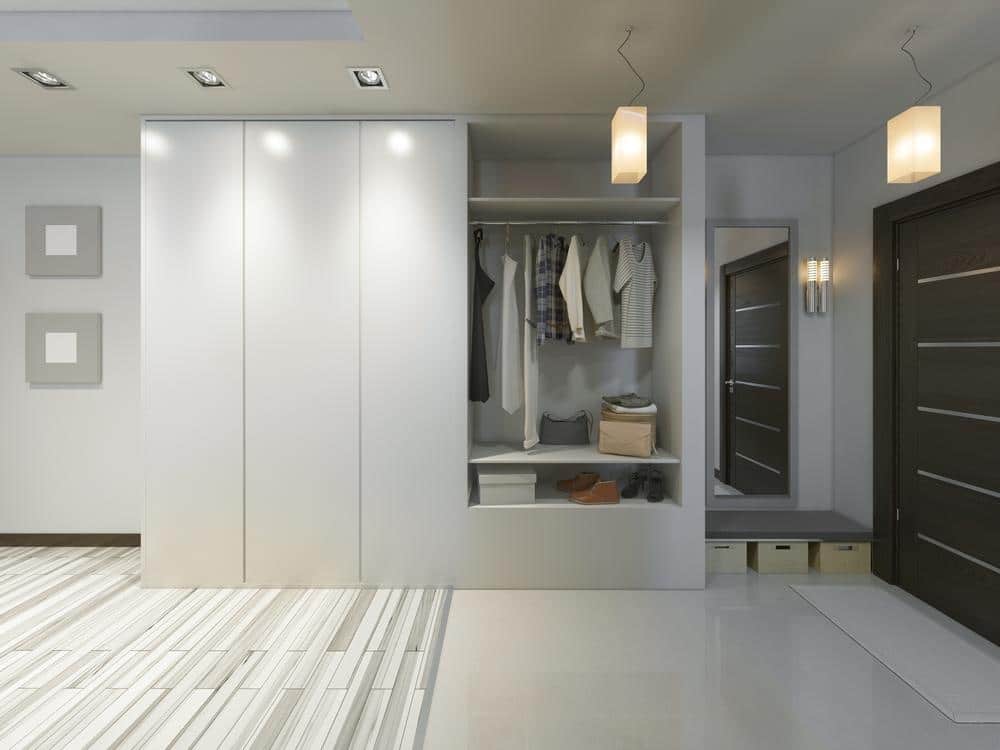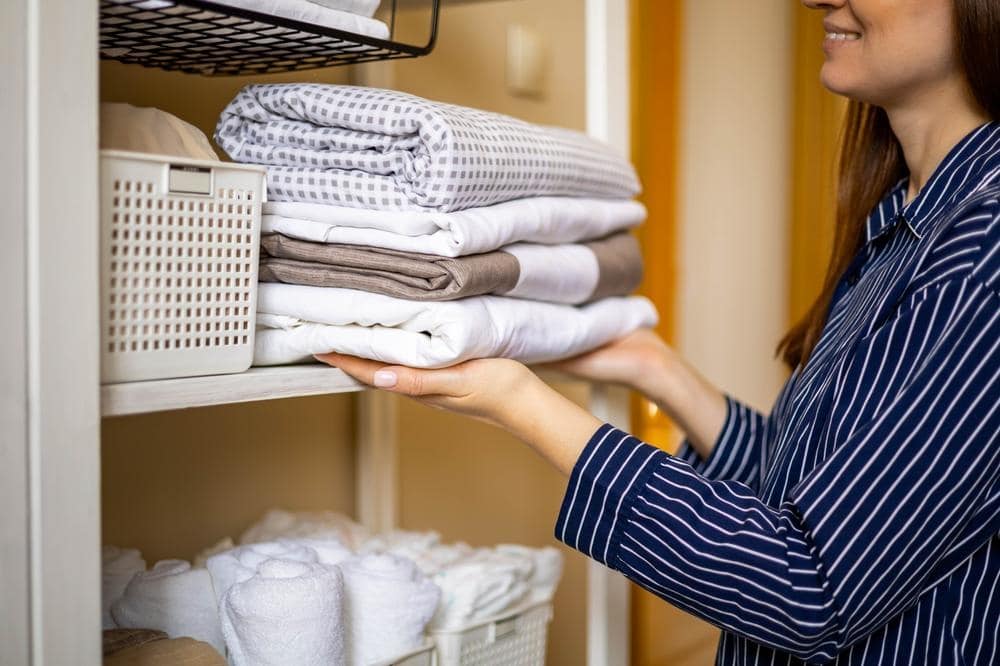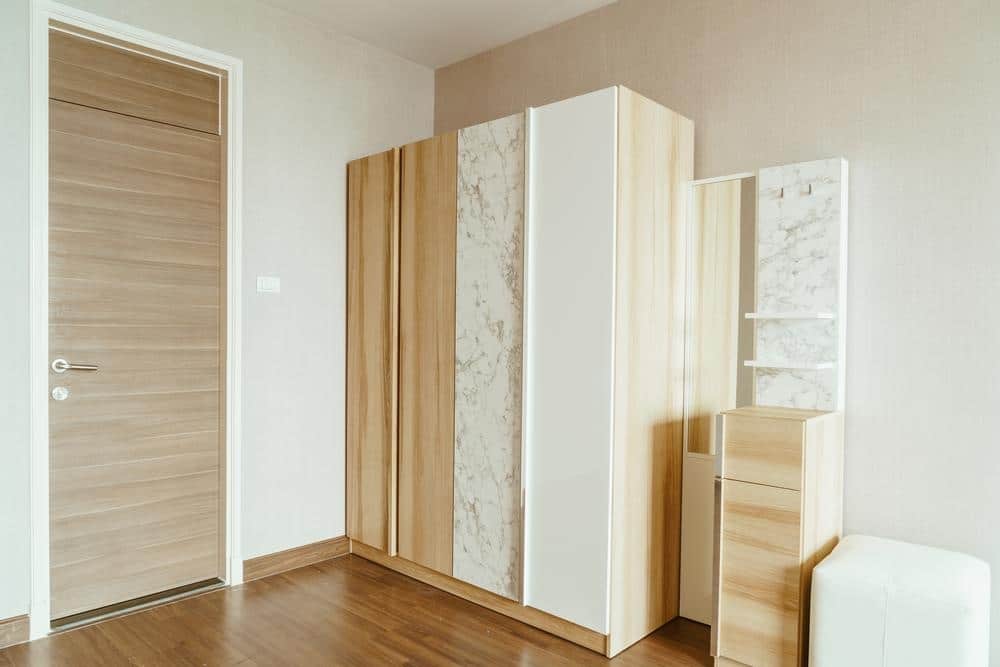If you live in a hot, humid climate or have noticed rusty cans among your non-perishables, you’ve probably wondered if your pantry requires ventilation. Proper ventilation and temperature control can make or break the freshness and safety of your pantry items. We researched this topic to provide you with all the necessary information to determine whether adding ventilation to your pantry is essential.
For your peace of mind, consider ventilating your pantry. Ventilation regulates temperature, protects against moisture buildup, prevents mold, and extends the shelf life of non-perishable foods. You should consider proper ventilation for your pantry if:
- You’re having trouble keeping your pantry at the appropriate temperature.
- Moisture accumulates in your pantry, causing cans to rust.
- Mold/mildew can be detected visually or by smell.
Before you panic and add ventilation to your pantry, read on to see if it’s the best option for your space. You may not need to worry about this particular addition if your pantry meets specific standards all year. However, if you are concerned about any of the three issues listed above, it is best to avoid them by ventilating your pantry.
Should a Pantry Have Ventilation?
Table of Contents
- Should a Pantry Have Ventilation?
- Trouble Keeping Your Pantry in The Right Temperature
- Moisture Accumulating In Your Pantry Causing Cans To Rust
- When You Notice Mold Or Mildew In Your Pantry
- Does This Apply To My Pantry Ventilation?
- What Temperature Should A Pantry Be?
- What Should You Do if Pantry is Too Hot?
- How Do I Keep My Pantry Cool?
- How Can I Make My Pantry Colder?
- How to Assure Your Pantry Stays Nice And Cool
- What To Do If Your Pantry Is Stuffy And Stale?
- Should A Pantry Be Dark?
- The Verdict On Ventilation For Your Pantry
- Should a pantry be cold?
- Do pantries need windows?
- Should a butler’s pantry have a window?
- Can the kitchen be air-conditioned?
- What is a passive ventilation system for a pantry?
- How do you dehumidify a pantry?
- How do passive air vents work?
- Why does my pantry get hot?
- Why is there a vent in my pantry?
- Does a larder need ventilation?
- How do I keep my pantry cool and dry?
- Should a pantry be insulated?
- Does baking soda absorb dampness?
- Should a pantry door open in or out?
- How do I ventilate my pantry?
- How cool should a pantry be?
- What is the ideal humidity for a pantry?
- Does food storage room need ventilation?
- How do I stop moisture in my pantry?
- How do you make an airflow in a cupboard?
- How do you properly ventilate air?
- How do you ventilate a closed kitchen?
- Should pantry be airtight?
- What temperature should a pantry be in Celsius?
- What is the ideal temperature for a pantry in Celsius?
- What should you not put in a pantry?
- Should a pantry be open or closed?
- How warm is too warm for a pantry?
- How Do I Cool Down My Pantry?
- Does a Pantry Need Heating?
- Should a Kitchen Be Ventilated?
- Do You Need an Air Vent in a Kitchen?
- Does a Walk-In Pantry Need Ventilation?
- How Do You Circulate Air in a Pantry?
- What is the Ideal Temperature for a Pantry?
- What are the Ideal Conditions for a Pantry?
- How Do I Lower the Humidity in My Pantry?
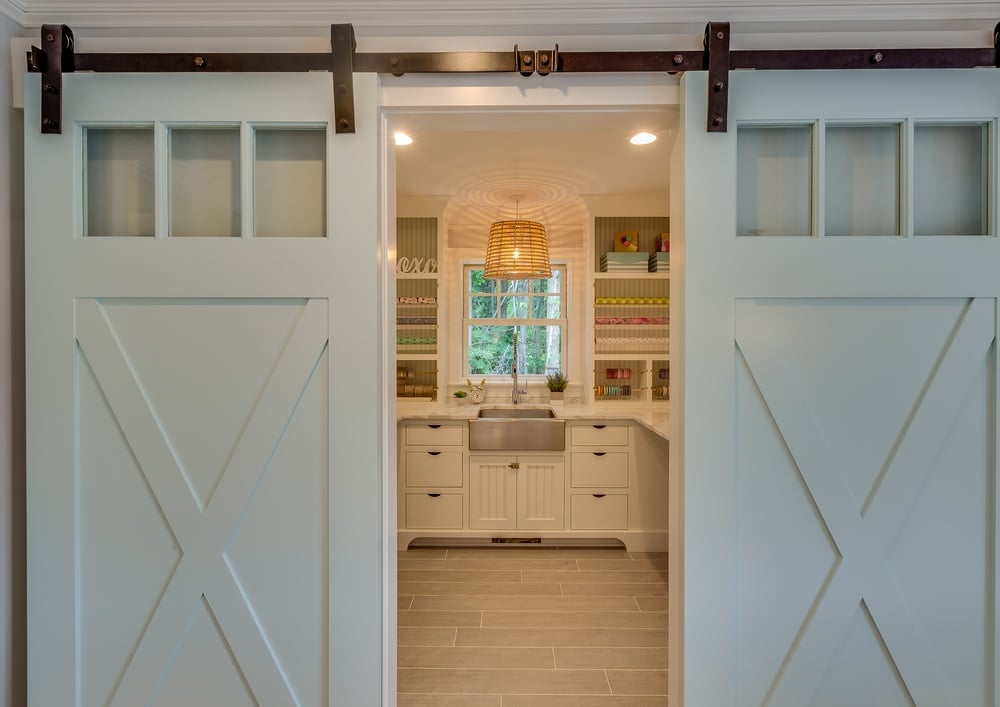
The pantries have been used for hundreds of years and are bread storage rooms. When preparing bread-related food, the pantry was always utilized. The pantry was a distinct area from the larder for storing meats. Mold, pest infestations, and many other undesirable consequences will result if moisture enters the pantry. You must have good ventilation to keep odors, water, and heat at bay. Pantry ventilation is an absolute necessity if you live in a high-humidity environment. Glass door cabinets allow you to see what is inside each cabinet with just one glance. This is another good way to store items long-term while minimizing odors.
Passive and Active Ventilation
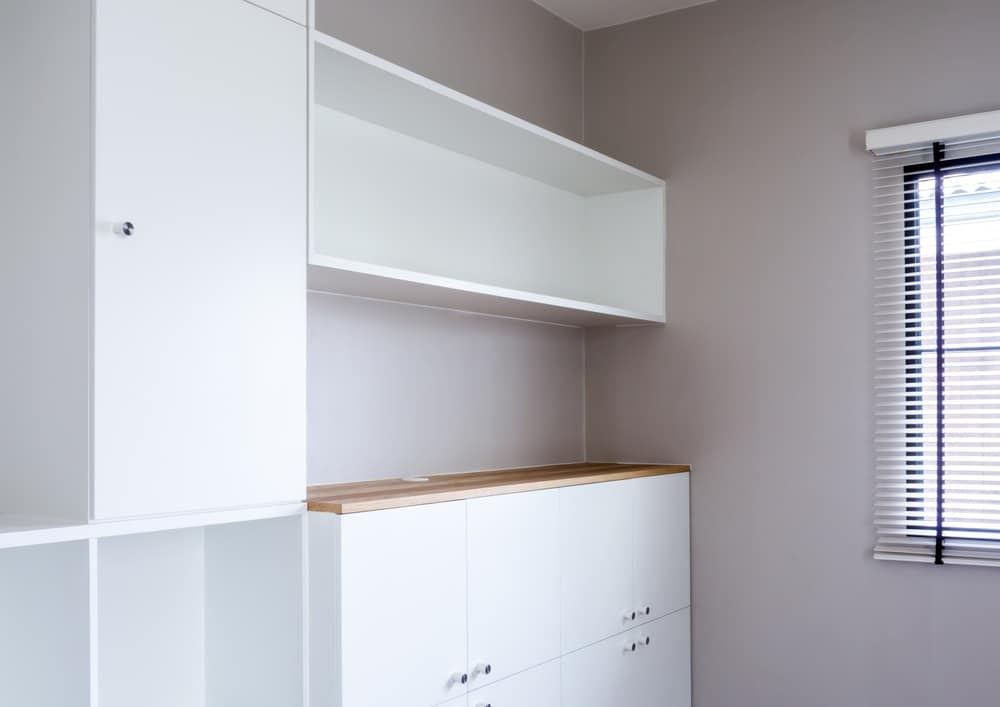
Passive ventilation relies on the natural world and operational pressure to provide cool air. Windows and ducts are two key ways to achieve this. Fungal spores can be dispersed by active ventilation systems, such as fans, pumps, and ducts, that are installed to regulate air flow mechanically. You may keep your pantry at a specific temperature by incorporating temperature sensors with a feedback system. Of course, this will increase the running cost of your pantry, so carefully consider what your objectives are with it.
Trouble Keeping Your Pantry in The Right Temperature
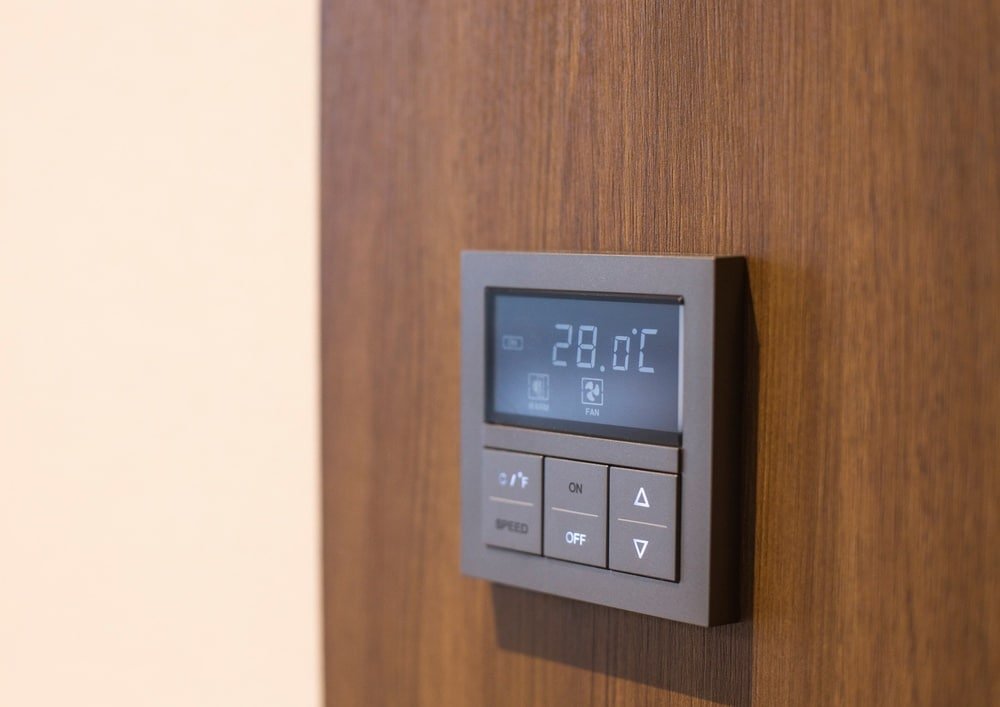
First, assess your space and make a few critical notes. Is one of the walls in your pantry also an outside wall? This could imply that any food stored on a shelf adjacent to this wall spoils faster or rises to higher temperatures at certain times of the year. This may be especially true if you live in a hot climate.
Hanging a thermometer on that wall is one way to see if this is an issue. Check the temperature daily to see if it ever goes above safe levels. If it does, you may need to install a vent in your pantry to keep your food cool.
A popular option is the ThermoPro digital thermometer. You can put it on a shelf in your pantry or hang it on the wall.
For a more traditional look, consider Miksus’s gorgeous stainless steel non-digital thermometer –
Is your pantry door solid, or do you have slats? Hang a thermometer inside the pantry if the door is solid. Check it every day for a week to see if it ever gets hotter than the rest of your house. If the temperature rises to uncomfortably high levels, consider replacing your solid door with a slatted one to allow more airflow into and out of your pantry.

Moisture Accumulating In Your Pantry Causing Cans To Rust
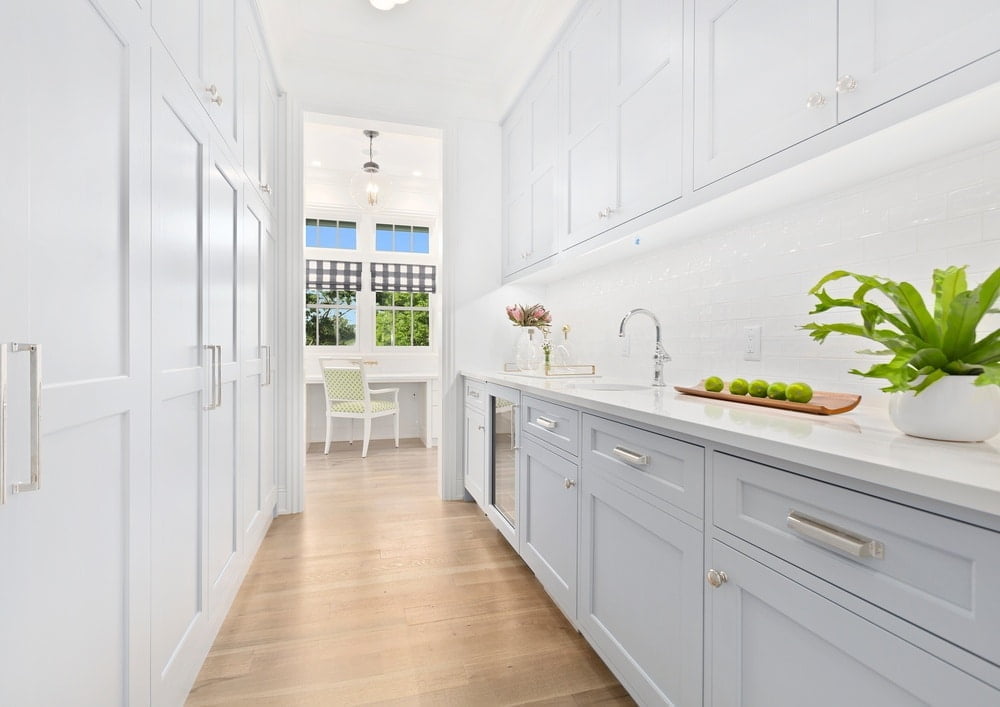
Rust is a serious indicator that your canned foods are no longer safe to eat. According to the United States Department of Agriculture, rusted cans almost always indicate that the iron has oxidized, rendering the food unfit for consumption. To avoid food-borne illnesses, it is best to discard any containers that have rusted.
How do we prevent rust in the first place? Even a trace of moisture damages food containers and shortens the shelf life of non-perishable items. Condensation should be kept out of the pantry. Condensation should be observed out of the pantry. Condensation should be kept out of the pantry.
Moisture is a significant issue for a food’s shelf life and edibility, even when properly stored. One method for preventing condensation on food is to keep it in airtight containers made of solid materials such as glass or durable plastic. When you open a container, bacteria, and other harmful substances can quickly spread to the inner contents, according to the FDA.
The best way to reduce moisture in your pantry is to ventilate it. When air flows freely, it aids in the drying of excess condensation and prevents harmful buildup that could lead to the dreaded mold problem.
When You Notice Mold Or Mildew In Your Pantry
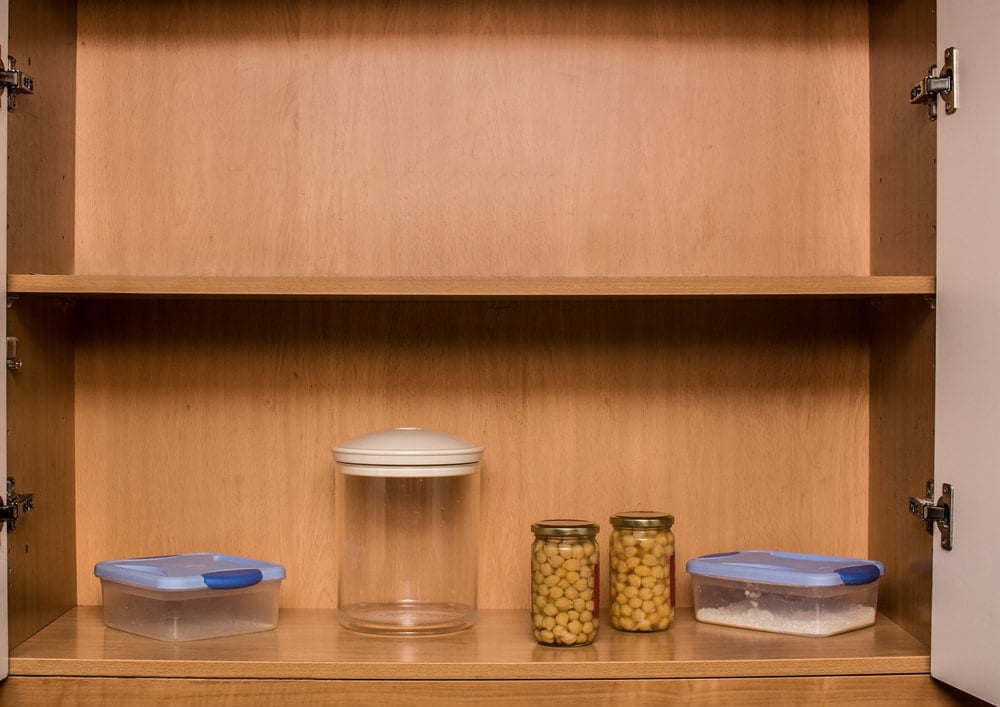
If you notice mold in your pantry, this is the most significant and potentially dangerous sign that you need ventilation. Numerous resources are available to explain how to remove existing mold, but the best way to avoid this problem is to maintain proper ventilation.
WikiHow provides some helpful tips for preventing mold in the kitchen but lacks specifics for the pantry. Nonetheless, their advice applies to any room in your home where moisture levels may rise. To keep your pantry dry and cool, allow air circulation in and out of it. If installing ventilation in your pantry appears to be an expensive solution to your moisture problem, consider purchasing a small dehumidifier during the humid months of the year.
Does This Apply To My Pantry Ventilation?
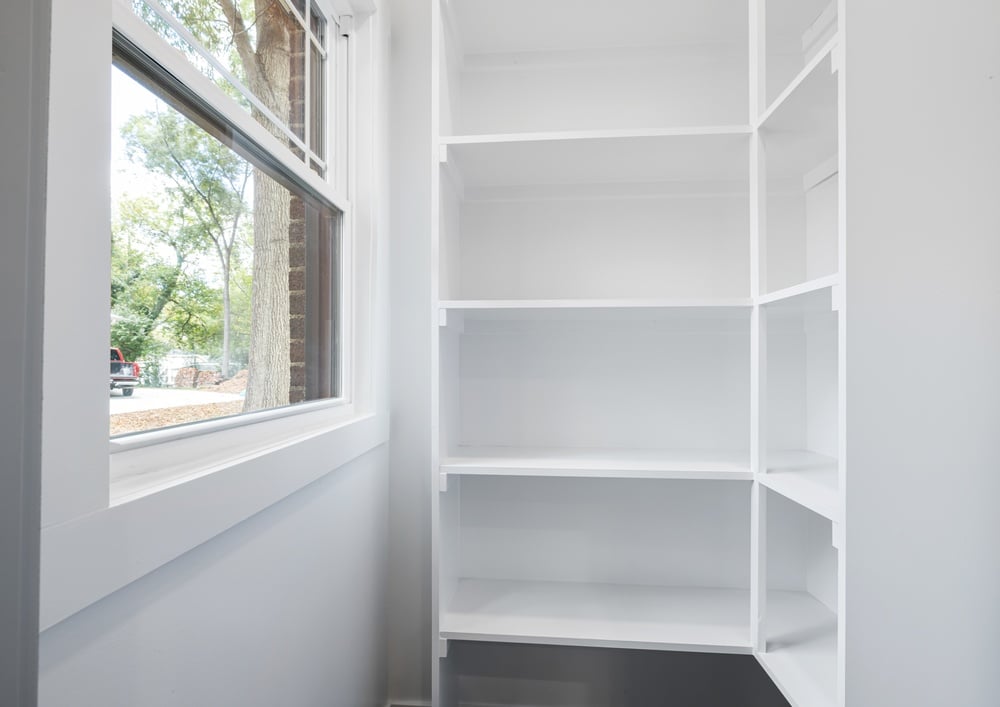
Examine your pantry space and your year-round climate and humidity levels. Monitor the temperature of your pantry, look for moisture accumulation and keep an eye out for mold. It may surprise you that, even in colder weather, your pantry can get higher temperatures than you like, so ventilation is recommended. It may surprise you that, even in a colder climate, your pantry can reach higher temperatures than you prefer, in which case ventilation is recommended. You may not need to worry about pantry ventilation if you live in a colder climate with low humidity.
What Temperature Should A Pantry Be?

To maintain the freshness of your non-perishable items, the University of Georgia recommends keeping your pantry between 50 and 70 degrees Fahrenheit. They warn that heat may contribute to nutrient loss in your foods, so keep your pantry cool.
If you cannot keep your pantry at that temperature, the USDA recommends not allowing levels to rise above 85 °F to avoid spoilage and potential food-borne illnesses.
What Should You Do if Pantry is Too Hot?
Storing all of your food in a cool, dry place is suggested by most food products. The most optimal location is a pantry that is not too hot. There are several reasons why your pantry may be too hot: location, lack of ventilation, heating/cooling house factors, and window letting sunlight in. The northeast corner is always the coldest part of the house if you live in the US midwest and northern regions. However, home design generally trumps these pantry locations, and pantries are dropped into leftover space. As a result, pantries tend to be dropped in the middle of the floor plan because the homeowner wishes to save windows.
How Do I Keep My Pantry Cool?
As previously stated, adding ventilation is the most effective way to keep your pantry cool. Aside from pantry ventilation, it would help if you considered using a vent hood while cooking, storing items far away from appliances (especially the stove), and opening windows in your kitchen or other adjoining rooms when the weather permits.
Keeping overhead fans on in adjacent rooms may help, and you may also want to consider purchasing a portable fan to keep in your pantry during the warmer months.
How Can I Make My Pantry Colder?
Ventilation is one of the most effective ways of lowering the temperature. Small windows or vents should be installed on the home’s exterior and face north, letting in cool outdoor air. These windows should also be covered with netting or blocked from sunlight and pests. These vents should be fully closed so that winter temperatures can freeze the contents of a pantry and keep the temperature low using nature’s power. If you have air conditioning in your home, you may leave the pantry door open to cool down the air’s ambient temperature.
How to Assure Your Pantry Stays Nice And Cool
To keep a cool pantry, plan to control where the pantry is located on the floor, use doors that allow airflow, remove or add vents for air control, and avoid having appliances like freezers or refrigerators in walk-in pantries.
What To Do If Your Pantry Is Stuffy And Stale?
Bad-smelling pantries are usually due to a lack of airflow and ventilation. However, changing the airflow and ventilation system may not be enough. Because of the hotter temperatures, the door is shut, and the appliances contribute to the problem. For example, this section concerns canned and dry goods that are not as likely to smell. It doesn’t mean concerned root cellar products.
Should A Pantry Be Dark?
In a nutshell, yes! A pantry should be kept dark between searching for food and ingredients.
According to Healthfully, “photodegradation” is a process in which light, even artificial light, interacts with compounds in a food item and reduces its nutrient content. When foods are exposed to sunlight, they lose nutrients, flavor, color, and antioxidants.
The Verdict On Ventilation For Your Pantry
Pantry ventilation is one of the most important ways to keep your pantry items dry, calm, and mold-free. If you want to keep fresh spices, dry pasta, and baking ingredients, store them in airtight containers in the dark. Eliminate condensation to keep your canned goods rust-free and your surfaces mold-free. Maintain proper airflow in your pantry to ensure optimal food preservation.
Should a pantry be cold?
It is essential to keep your pantry cool and fresh. This way, you can avoid having unhealthy appliances in the space that will generate heat when they’re turned on for long periods or left running overnight without being used at all!
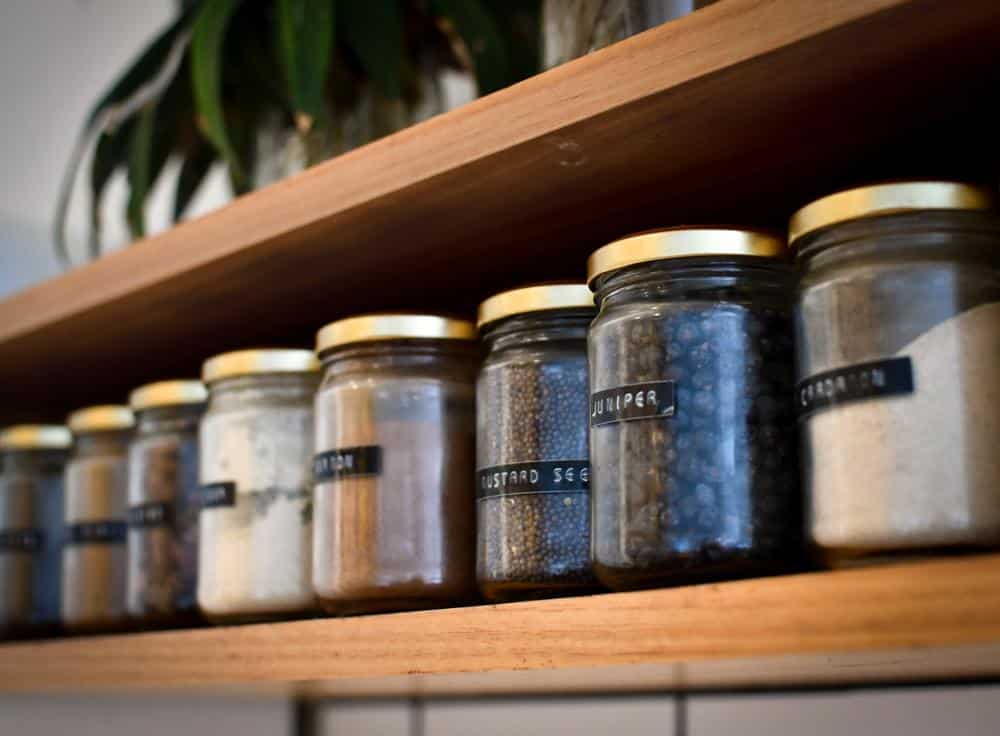
Do pantries need windows?
Pantries should have a window, but it’s not necessary. Windows bring in natural light and allow for extra ventilation, making them perfect additions to any pantry regardless of size or location!
Should a butler’s pantry have a window?
Ensure adequate lighting and ventilation if you use your butler’s pantry for food preparation. A window is ideal, but if that’s not possible, use a strip light or task lighting on the countertop. An extractor fan is also necessary for these situations.
Can the kitchen be air-conditioned?
The perfect AC to get work in your kitchen is a window unit. Keeping it at 26 or 27 degrees is critical, so the kitchen remains cool and the cooking process doesn’t slow down. It’s also essential to keep it at room temperature or slightly higher, 26 or 27 degrees, so the cooking process does not take longer without much fuel.
What is a passive ventilation system for a pantry?
Using natural forces such as wind and thermal buoyancy, passive ventilation allows air to flow in and out of an indoor space. These pantry ventilation systems regulate the internal air temperature, bringing fresh air in and sending out stale air.
How do you dehumidify a pantry?
The first step to addressing humidity problems in your home is ventilation. Open up any doors or windows near where you have an excessive amount of moisture, then use a fan that blows outside rather than continuing airflow into the room where it’s trapped; this will help send moist air out from inside so it can easier dissipate around everything else!
How do passive air vents work?
Natural ventilation, also known as passive heating and cooling systems, uses natural forces to circulate air in and out of an indoor space. These techniques work by regulating both temperature levels with fresh air coming into your home or office building through vents that are strategically placed throughout the structure’s rooms, sending a stale atmosphere up outside where it can be captured for removal before entering.
Why does my pantry get hot?
The heat in your pantry might be caused by a large window or door connecting it to another room. This transfer of energy can increase the temperature and make foods more receptive to pests, which is why you should consider installing screening on these types of doors.
The sun’s rays entering through glass windows may also stimulate converses that create condensation within walls near them. This type of moisture could attract insects looking specifically at those areas.
Why is there a vent in my pantry?
Keeping your pantry within the correct temperature range is a good thing, as it ensures that your non-perishable foods are protected from moisture build-up and mold, as well as maximizing their longevity. You may have to re-ventilate your pantry if the temperature is incorrect.
Does a larder need ventilation?
A refrigerator should not be placed in a pantry as it will produce heat. A well-ventilated pantry should be cool and free of moisture.
How do I keep my pantry cool and dry?
Moist paper towels, sponges, or water containers can be placed in the fridge to keep conditions both cool and damp. Using cold water to trickle over the floor keeps conditions both cool and damp.
Should a pantry be insulated?
Insulating a pantry is important for keeping food and other stored items safe. Insulation prevents items inside the pantry from becoming too hot or too cold and helps protect against moisture, pests, and decay.
Generally speaking, any storage space that stores dry goods should be insulated, including pantries. You can use any type of insulator, such as foam board or fiberglass batting, according to your preference and budget; however, for best results, you may want to consider using spray-in foam insulation, which is more efficient at providing air sealant than traditional types.
This air sealant will help prevent heat transfer from outside temperatures entering your pantry space. Additionally, if you use a walk-in type without walls constructed around it (as one might find in a basement), additional atmospheric barriers should be used, such as rigid foam board insulation, to keep temperatures consistent regardless of the season.
Does baking soda absorb dampness?
Yes, baking soda is an effective moisture absorber and dehumidifier. It works by absorbing the dampness in your pantry or other storage space resulting in dryer air. The effectiveness of baking soda as an absorbent may be improved by making sure you have proper pantry ventilation. A small fan can facilitate air circulation and help prevent musty odors from forming due to stagnant air. A good practice is to use open containers or loosely packed bags to store things such as flour, sugar, and other items prone to developing moisture problems caused by condensation on their surfaces.
By allowing airflow around them, you create a much less ideal environment for mold growth which could otherwise occur if these things were stored tightly sealed with no nearby ventilation source.
In summary, yes, baking soda does absorb dampness well when used properly with adequate pantry ventilation so it makes a great solution for keeping storage areas dry and preventing mold from growing on food items within your pantry.
Should a pantry door open in or out?
When deciding whether a pantry door should open in or out, there are a few factors to consider. Generally, the direction it opens will depend on the available space and the type of ventilation your pantry needs.
An inward-opening door may be more appropriate if you’re limited in space surrounding your pantry door. An inward-opening door can help prevent crowding by using less space because it occupies less room than an outward-opening one. Additionally, some people prefer inward-swinging doors for aesthetic reasons since they don’t protrude from the wall and can create a smoother look inside their homes.
On the other hand, if air circulation is important in your pantry, then an outward-swinging door could better suit its needs. This type of opening allows warm air to escape while cooler air enters; this helps keep moisture levels down and prevents any built-up smells from permeating through your home kitchen—especially during summer months when warmer temperatures cause food items to spoil quickly if not refrigerated properly or stored in sealed containers away from direct sunlight (e.g., inside cabinets or storage boxes).
It’s also worth considering that when open, an outward swing gives access to larger portions of shelf surface area compared with an inward swing making it easier for users to reach items on lower shelves without having to crouch down uncomfortably as much with indoor swings.
How do I ventilate my pantry?
Ventilating a pantry is an important part of organizing and managing the space. Having an area to store and organize food items helps with easy access, rotation of products, as well as keeping the surrounding environment free from moisture and other sources of contamination that can happen in a poorly ventilated area. To properly ventilate your pantry, there are some things you should consider:
1) Positioning – First off, ensure you’ve placed your pantry in a low-humidity area or away from water sources such as sinks or washing machines. As much as possible try to keep it away from direct sunlight too so that warm air doesn’t enter the pantry when opened.
2) Install an exhaust fan – A fan will help circulate air throughout the space by removing old stale air and bringing in fresh air which is especially important if you’re using areas around your cupboard for cooking or laundry activities. Ideally, this fan should be connected to ducts taking the stale air directly outdoors for proper exhaust ventilation but this isn’t necessary if no water-producing activities take place nearby (cooking with gas stove etc).
3) Place window vents – If natural ventilation through open windows isn’t available then make sure there are kitchen window vents to allow fresh outdoor air into your particular environment such as rattail type mechanisms at lower parts of windows where they don’t interfere with privacy/security measures yet allow sufficient airflow exchange particularly during cooler months when fans aren’t necessary for cooling purposes..
4) Keep doors open – Finally remember to keep doors open where appropriate, closing them only when storing delicate food items in jars like jams & pickles or any other item sensitive to temperature variance & humidity levels within confined spaces like a sealed container! The more consistent flow of outside atmosphere throughout these areas will greatly reduce any potential spoilage due increasing lifespans on perishable goods stored therein…
How cool should a pantry be?
The ideal temperature for a pantry should be between 55-70°F (13-21°C). This range will ensure that items such as breads, cereals, and other dry goods stay fresh over time. Anything colder than 55°F can potentially cause condensation to form on packages which can lead to mold growth.
What is the ideal humidity for a pantry?
The ideal humidity for a pantry should range between 45% and 65%. Ideally, the average relative humidity (RH) should be kept at 55%. Keeping the RH even lower or higher than this may cause problems. Lower than 45% can result in some foods drying out, whereas an RH of greater than 65%, can increase the risk of condensation leading to mold growth on foodstuffs.
Does food storage room need ventilation?
Yes, food storage rooms need proper ventilation to prevent the buildup of moisture, which can lead to mold growth and spoilage of food items. Lack of proper ventilation can also lead to the accumulation of harmful gases such as carbon dioxide and ethylene, which can cause food to ripen or rot faster.
How do I stop moisture in my pantry?
To stop moisture in your pantry, you can try using moisture-absorbing products such as silica gel or a dehumidifier. You can also ensure proper ventilation by keeping the pantry door open for some time each day or installing a ventilation fan. Additionally, you can check for any leaks in the pantry or surrounding areas that may be causing excess moisture.
How do you make an airflow in a cupboard?
To create airflow in a cupboard, you can install small vents at the top and bottom of the cupboard door or drill some holes in the back of the cupboard. This will allow air to circulate and prevent the buildup of moisture. Additionally, you can keep the cupboard door slightly open when not in use to improve air circulation.
How do you properly ventilate air?
Proper ventilation of air involves ensuring that there is a continuous flow of fresh air into the space while removing stale air. This can be achieved by installing exhaust fans or opening windows regularly. It is important to ensure the ventilation system is properly designed and installed to prevent potential health hazards.
How do you ventilate a closed kitchen?
To ventilate a closed kitchen, you can install a range hood or exhaust fan above the stove to remove cooking fumes and odors. Additionally, you can keep windows or doors open when cooking to improve air circulation. It is also important to ensure that the ventilation system is regularly cleaned and maintained to prevent the buildup of grease and other debris.
Should pantry be airtight?
No, pantries should not be airtight as this can lead to the buildup of moisture, which can cause mold growth and spoilage of food items. Proper ventilation is necessary to prevent these issues. However, it is important to ensure that pests such as insects and rodents are prevented from entering the pantry by sealing any potential entry points.
What temperature should a pantry be in Celsius?
The ideal temperature for a pantry is between 10 and 21 degrees Celsius (50-70 degrees Fahrenheit) to prevent the growth of bacteria and mold. Temperatures above or below this range can cause food to spoil faster or become unsafe to consume.
What is the ideal temperature for a pantry in Celsius?
As mentioned earlier, the ideal temperature for a pantry is between 10 and 21 degrees Celsius (50-70 degrees Fahrenheit). This range ensures that food remains fresh and safe to consume for a longer period of time.
What should you not put in a pantry?
You should avoid storing perishable items such as fresh produce, dairy products, and raw meat in a pantry. These items should be stored in a refrigerator to prevent spoiling. Additionally, flammable items such as cleaning chemicals and gasoline should not be stored in a pantry due to safety concerns.
Should a pantry be open or closed?
A pantry should be closed to prevent pests and dirt from entering the space. However, it should have proper ventilation to prevent the buildup of moisture. Keeping the pantry door slightly open or installing a ventilation system can improve air circulation while still maintaining a closed space.
How warm is too warm for a pantry?
A pantry should not exceed 21 degrees Celsius (70 degrees Fahrenheit) as this can cause the growth of bacteria and mold. Temperatures above this range can cause food to spoil faster or become unsafe to consume. It is important to regularly monitor the temperature in your pantry to ensure that it remains within a safe range.
How Do I Cool Down My Pantry?
Cooling down your pantry can be achieved by increasing ventilation, blocking out heat with window film, and managing humidity. It’s also beneficial to store appliances elsewhere as they generate heat. For a more permanent solution, you could consider building your pantry with stone, tile, or rock which naturally stay cooler.
Does a Pantry Need Heating?
Generally, a pantry does not need heating. The ideal pantry environment is cool and dry, so adding heat could potentially spoil some items. However, if you live in a particularly cold climate, some minimal heating might be necessary to prevent freezing.
Should a Kitchen Be Ventilated?
Yes, a kitchen should be ventilated. Proper ventilation helps remove cooking smells, reduces heat, and improves air quality by removing smoke and other pollutants produced during cooking. A range hood or an exhaust fan are common ways to provide ventilation.
Do You Need an Air Vent in a Kitchen?
An air vent in a kitchen is essential for proper ventilation, especially if the kitchen has gas appliances. The vent allows harmful gases like carbon monoxide to exit, and fresh air to enter, ensuring the kitchen remains safe and comfortable.
Does a Walk-In Pantry Need Ventilation?
A walk-in pantry does benefit from ventilation. Good airflow helps keep the pantry cool and dry, preventing mold and mildew growth and helping to preserve food for longer.
How Do You Circulate Air in a Pantry?
Air in a pantry can be circulated by incorporating vents or grills into the pantry design, allowing for airflow. Placing one vent at the bottom for cool air to enter, and one at the top for hot air to escape, can create a natural airflow. Additionally, a small portable air conditioner or fan can help circulate air.
What is the Ideal Temperature for a Pantry?
The ideal temperature for a pantry is around 50-70 degrees Fahrenheit (10-21 degrees Celsius). This is cool enough to preserve food without risking freezing.
What are the Ideal Conditions for a Pantry?
The ideal conditions for a pantry are cool, dry, and dark. The temperature should be consistent and ideally between 50-70 degrees Fahrenheit. Humidity should be low to prevent mold and mildew, and light exposure should be minimal to preserve the nutritional quality of food.
How Do I Lower the Humidity in My Pantry?
To lower the humidity in your pantry, ensure good ventilation and consider using a dehumidifier. Additionally, avoid storing damp items in the pantry and use moisture-absorbing products if necessary. Wrapping items in a damp cloth can help to remove some of the heat and lower humidity levels.

Experienced Executive Assistant with a demonstrated history of working within the furniture industry. Skilled in furniture styling, visual communication, project management, and proficiency with Adobe Creative Suite. Strong arts and design professional with a (BA) Creative Direction for furniture design focused on Industrial Design from School of the Art Institute of Chicago.
